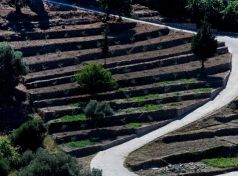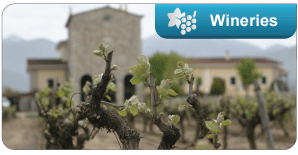The stone terraces (pezoules)
Many of the Greek terroirs, especially those located on mountain slopes, are inaccessible, barren and arid. And yet, they are winegrowing’s veritable treasure trove. Through ingenuity and hard work, vintners have managed to make those vineyards productive by building stone terraces (pezoules), or tiers, on the mountain slopes. In doing so, vintners have managed to accomplish the following four key functions:
• Cultivation of nutrient-depleted slopes
• Mountain soil retention
• Tapping the precious water of the scarce rainfall
• Sheltering the vines from the wind
Skillfully constructed, the stone terraces (pezoules) are supported by dry stone retaining walls and are often found at altitudes even higher than 900 meters. They shelter the vines from wind and drought. Their construction is an “art” requiring knowledge that touches not only on viticulture but also on geology, engineering and architecture.
Characteristic examples of stone terraces (pezoules) are found in renowned winegrowing zones of Greece such as the Aegean islands of Samos, Paros, Rhodes and Santorini. Stone terraces (pezoules) are also encountered in certain areas of mainland Greece.
Winegrowing on stone terraces (pezoules) is a hard and arduous traditional viticultural practice which yields small quantities but excellent quality grapes.



